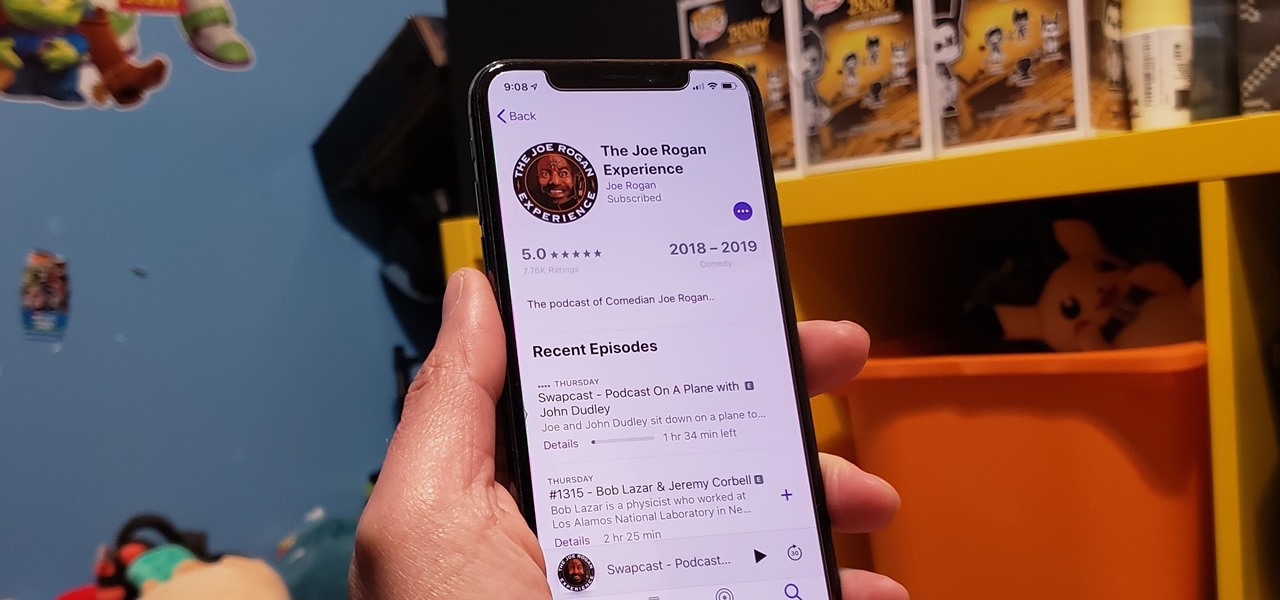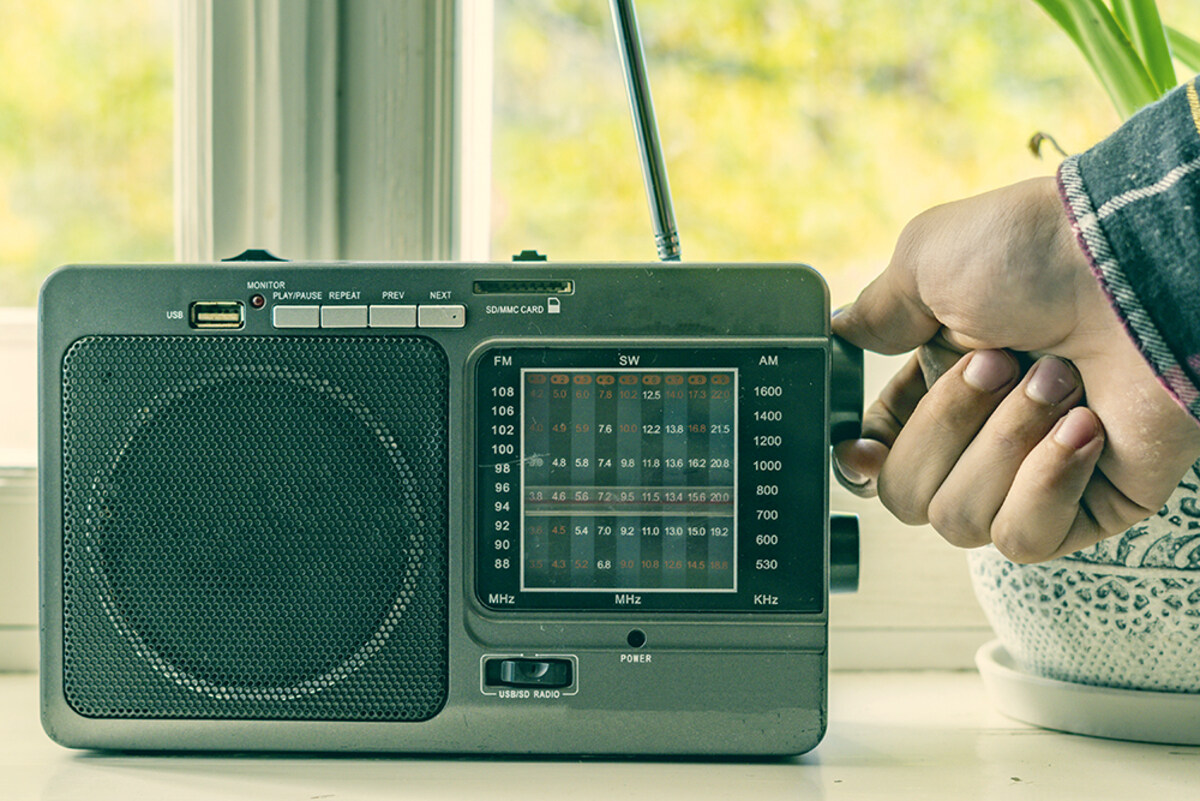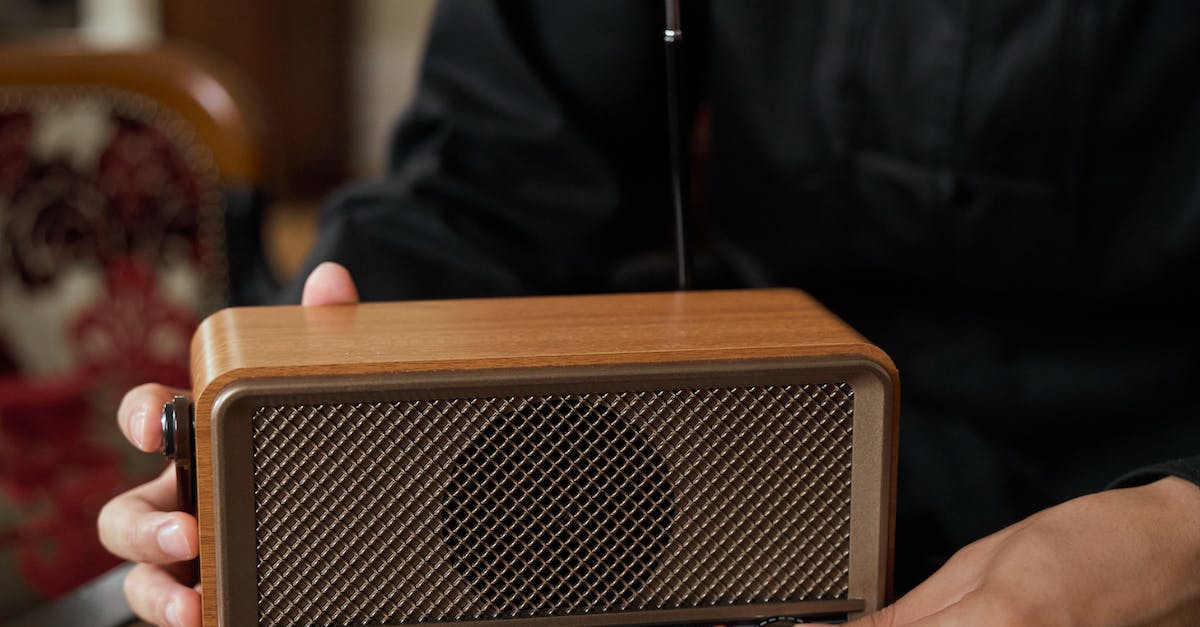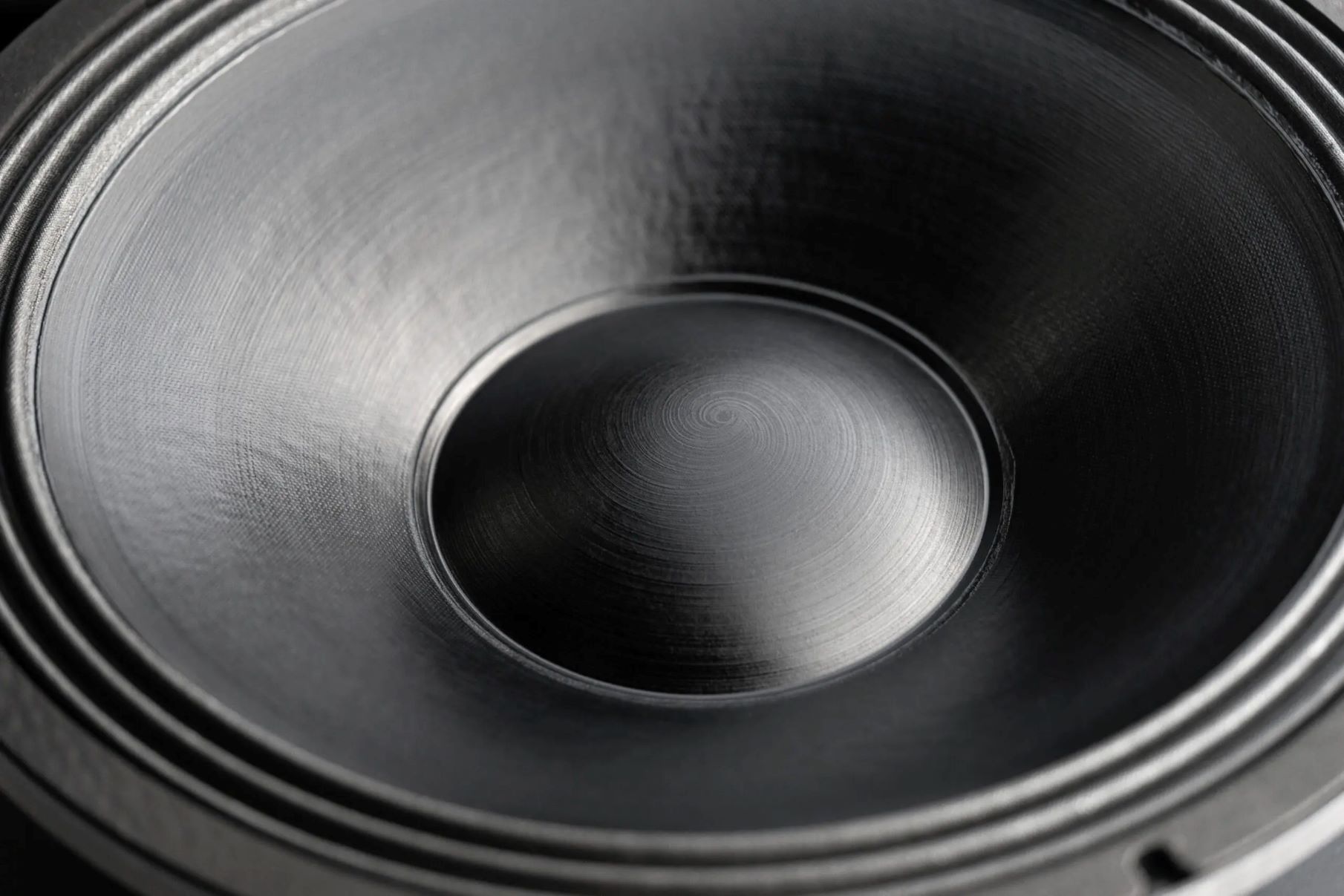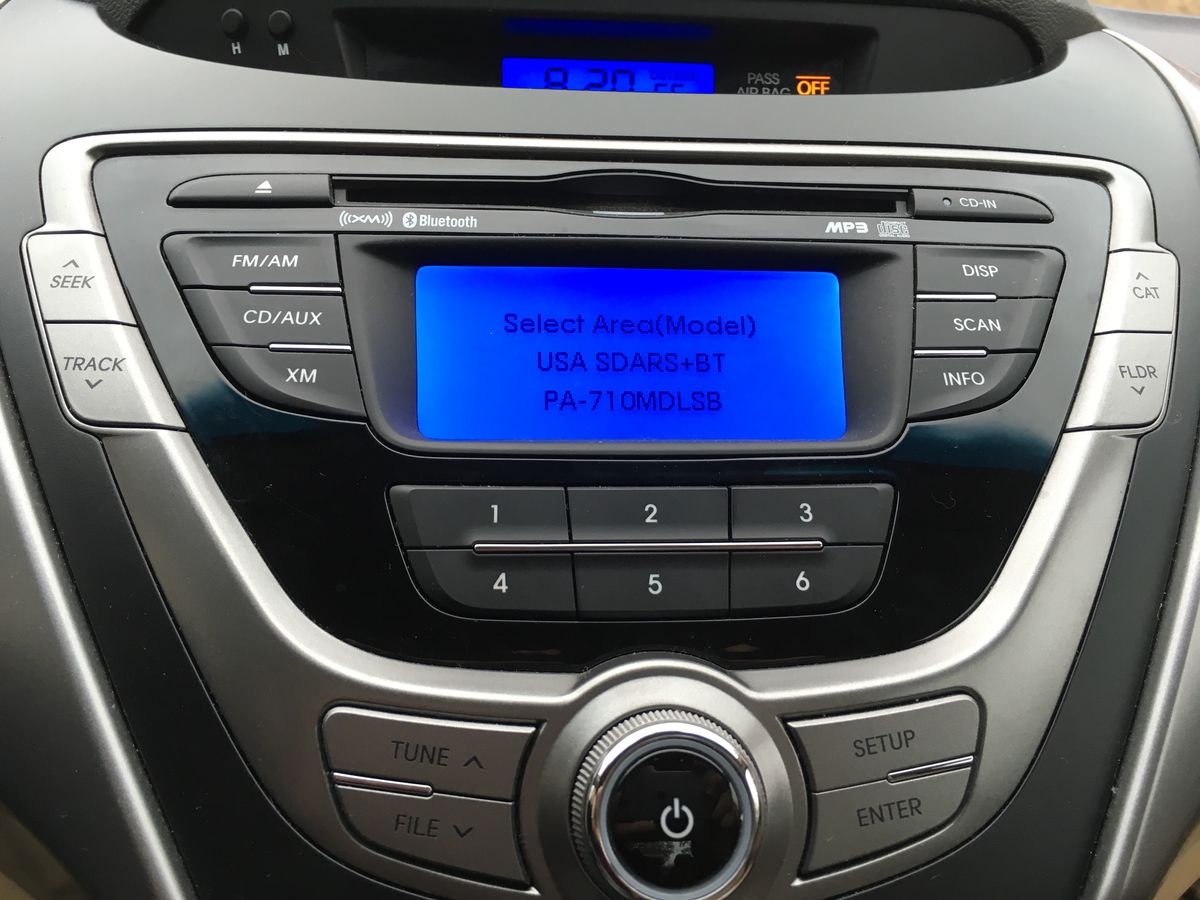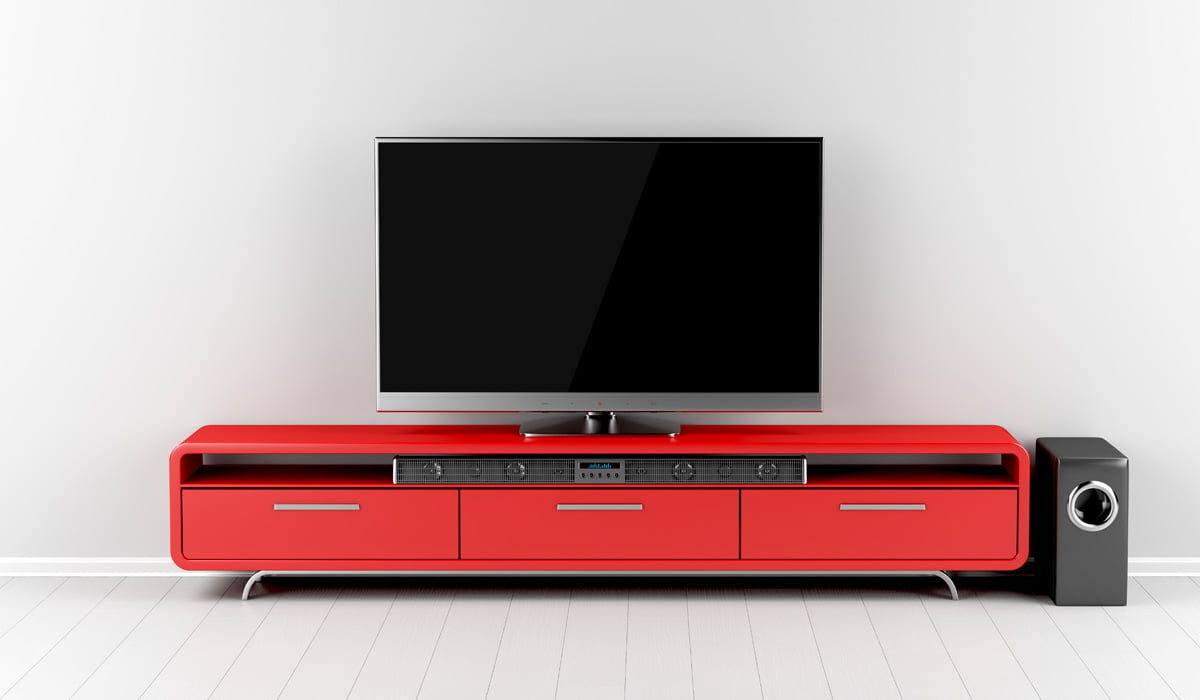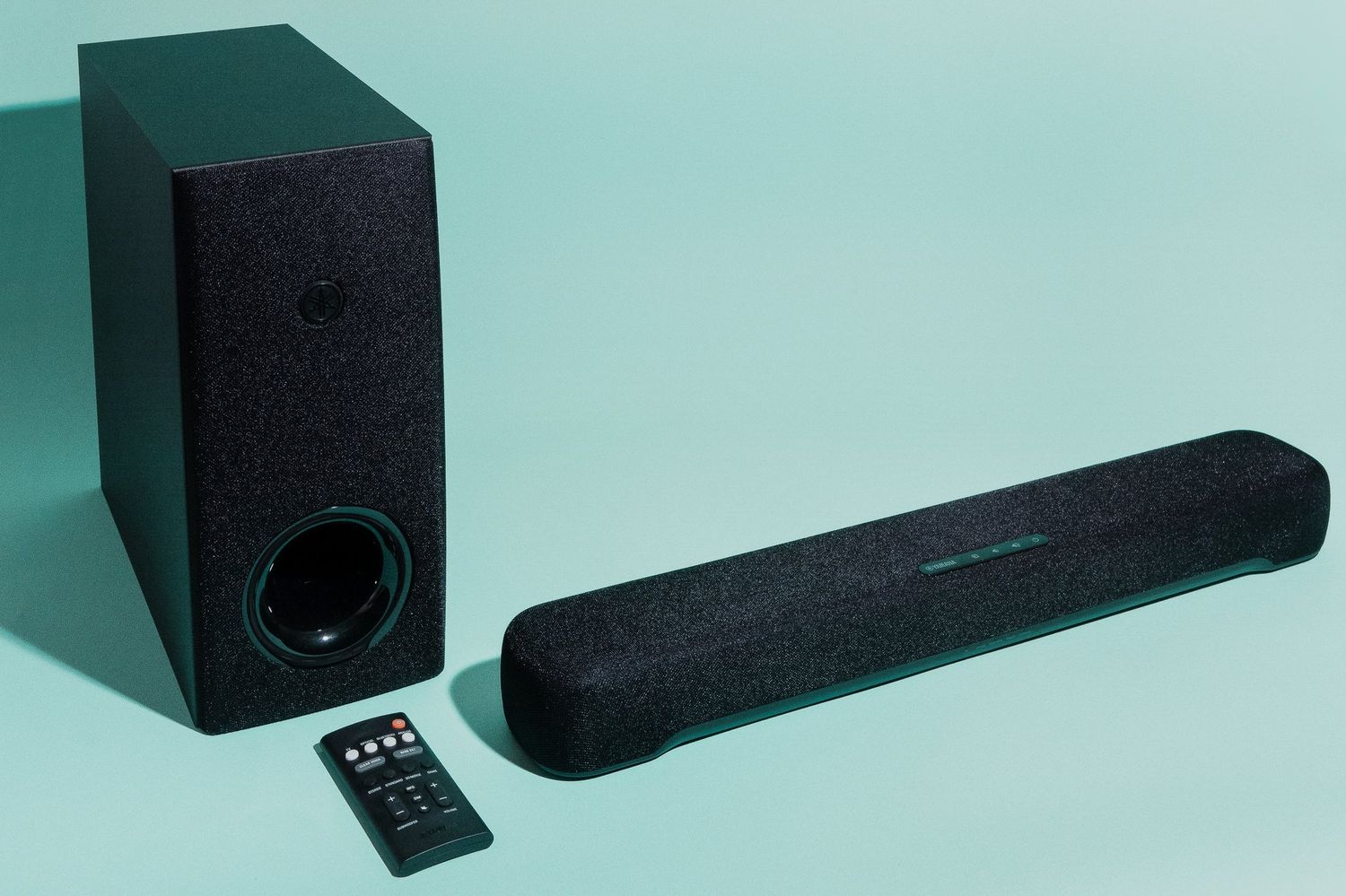Home>Devices & Equipment>Yamaha>Why Does My Yamaha Receiver Keep Turning Off
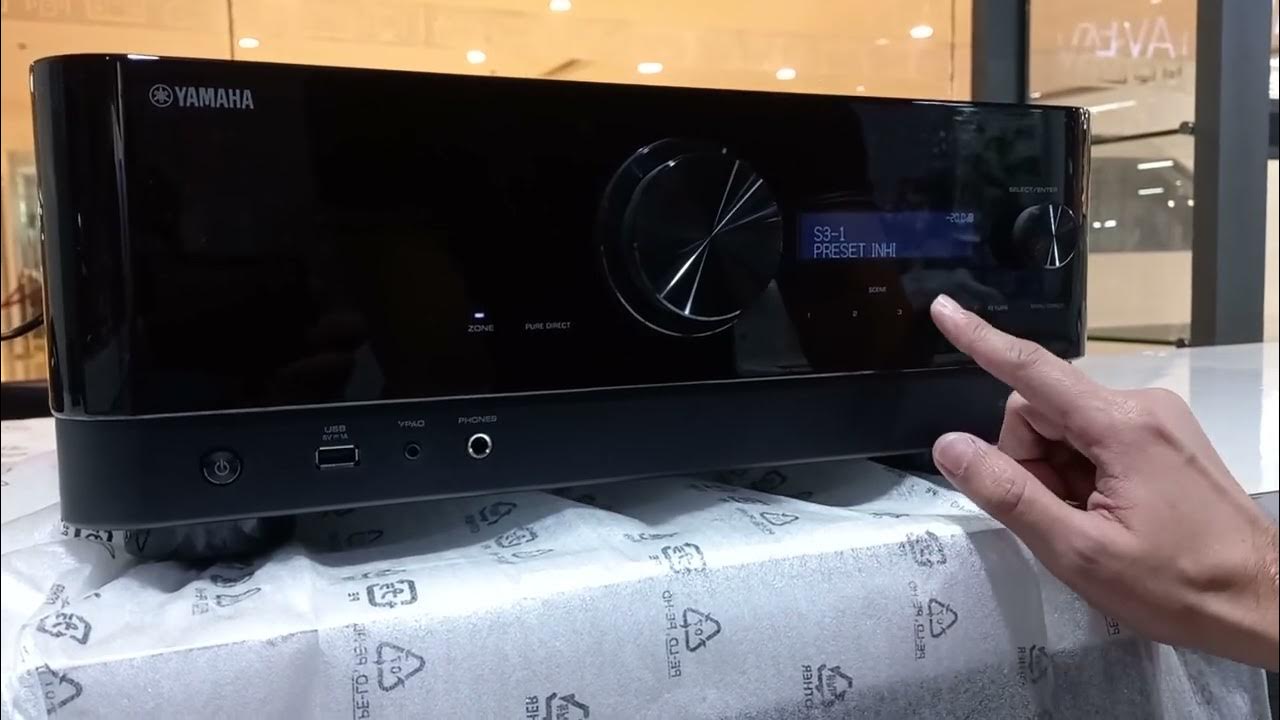

Yamaha
Why Does My Yamaha Receiver Keep Turning Off
Published: February 6, 2024
Facing issues with your Yamaha receiver constantly turning off? Discover the reasons behind this problem and get the necessary solutions to keep your receiver running smoothly.
(Many of the links in this article redirect to a specific reviewed product. Your purchase of these products through affiliate links helps to generate commission for AudioLover.com, at no extra cost. Learn more)
Table of Contents
Introduction
Welcome to the world of Yamaha receivers! These highly acclaimed audio devices are well-known for their exceptional sound quality and cutting-edge features. Whether you’re an audiophile or a casual listener, a Yamaha receiver can elevate your audio experience to new heights.
However, like any sophisticated electronic device, Yamaha receivers may encounter issues from time to time. One common problem that many Yamaha receiver owners face is the receiver turning off unexpectedly. It can be frustrating and perplexing, especially when you’re in the middle of enjoying your favorite music or a thrilling movie.
In this article, we will delve into the possible causes behind your Yamaha receiver repeatedly turning off and explore the troubleshooting steps you can take to resolve the issue. By understanding the underlying reasons and following the recommended solutions, you can regain uninterrupted audio bliss and continue to enjoy the full potential of your Yamaha receiver.
Before we dive into the specific causes and solutions, it’s important to note that each Yamaha receiver model may have its own unique characteristics and troubleshooting procedures. Therefore, we recommend consulting the user manual or contacting Yamaha support for model-specific guidance. Nevertheless, the following information will serve as a general guide to help you diagnose and address the issue.
Possible Causes
There are several potential causes for your Yamaha receiver consistently turning off. Understanding these underlying factors can help you pinpoint the exact issue and apply the appropriate solution. Let’s explore some of the common causes:
- Overheating: Yamaha receivers generate a significant amount of heat during operation. If the receiver overheats due to inadequate ventilation or prolonged use at high volumes, it may automatically shut down as a protective measure to prevent damage to the internal components.
- Speaker Impedance: Incompatibility between the receiver’s output impedance and the connected speakers can cause instability in the system. If the speaker impedance is too low or too high for the receiver to handle, it may result in excessive current draw and trigger the receiver to shut down.
- Faulty Power Supply: A malfunctioning power supply can cause intermittent power interruptions, leading to the receiver turning off unexpectedly. This could be due to issues such as faulty power cables, damaged internal components, or power surges.
- Protective Circuits: Yamaha receivers incorporate sophisticated protective circuits that safeguard against excessive voltage, current, or temperature. If these circuits detect any anomalies, they may shut down the receiver to prevent further damage.
These are just a few of the possible causes for your Yamaha receiver turning off. It’s essential to consider all these factors and identify the most likely culprit before proceeding with the troubleshooting steps. In the following sections, we will discuss these causes in more detail and provide solutions to address the issue. Remember to consult your user manual or contact Yamaha support for model-specific advice.
Overheating
Overheating is a common cause of Yamaha receivers turning off unexpectedly. These devices generate heat during operation, and if not properly ventilated, the internal components can become overheated, triggering the receiver to shut down as a protective measure. Here are some factors to consider when addressing overheating issues:
- Ventilation: Check if the receiver is placed in a well-ventilated area. Ensure that there is sufficient space around the receiver for air to circulate freely. Avoid placing it in enclosed cabinets or stacking other devices on top, as this can restrict airflow and trap heat.
- Clean the Vents: Dust and debris can accumulate in the vents over time, obstructing the airflow and contributing to overheating. Regularly clean the vents using a soft brush or compressed air to remove any build-up and improve ventilation.
- Volume Levels: Running the receiver at high volumes for extended periods can generate more heat. Consider lowering the volume or using an external cooling fan to help dissipate the heat effectively.
If overheating persists despite taking these measures, you can try resetting the receiver to see if that resolves the issue. To reset the receiver, refer to the user manual for specific instructions on how to perform a factory reset. This process can help restore the receiver to its default settings and potentially eliminate any underlying software or configuration-related problems contributing to overheating.
It’s worth noting that some Yamaha receivers include built-in protection mechanisms to prevent overheating by automatically reducing power output or activating cooling fans when the temperature reaches a certain threshold. If these protections are repeatedly triggered, it may be an indication of a more significant issue, and you should consider contacting Yamaha support for further assistance.
By addressing and mitigating overheating issues, you can prevent your Yamaha receiver from turning off unexpectedly and ensure optimal performance and longevity of the device.
Speaker Impedance
Incompatibility between the receiver’s output impedance and the connected speakers can cause instability in the system, leading to the receiver turning off unexpectedly. It is important to ensure that the speaker impedance matches the specifications outlined by the receiver manufacturer. Here are some considerations when dealing with speaker impedance issues:
- Impedance Ratings: Check the impedance ratings of your speakers and compare them to the recommended range specified by the Yamaha receiver. It is essential to match the impedance values to ensure optimal performance and prevent overheating or overloading of the receiver’s amplifier section.
- Matching Speaker Pairs: If you have multiple speakers connected to your receiver, make sure they are properly paired. Mixing speakers with different impedance ratings can cause an imbalance in the system and strain the receiver, leading to shutdowns. Consult the user manual or manufacturer’s specifications to ensure that you have properly matched speaker pairs.
- Bi-Wiring or Bi-Amping: Some receivers support bi-wiring or bi-amping, which involves connecting separate speaker cables to the high-frequency and low-frequency terminals of your speakers. Ensure that these connections are correctly established, and the impedance values are within the recommended limits. Poorly configured bi-wiring or bi-amping setups can result in unstable impedance and cause the receiver to turn off.
It is crucial to note that exceeding the recommended impedance range can strain the receiver’s amplifier circuitry, making it susceptible to overheating and potentially leading to the shutdown of the device. On the other hand, using speakers with impedance significantly higher than the receiver’s recommendation may result in reduced power output or distortion.
If you have verified that the speaker impedance is correctly matched and the issue persists, try disconnecting and reconnecting the speakers. Ensure a secure and stable connection between the receiver and the speakers, addressing any loose or faulty wiring. Additionally, inspect the speaker cables for any damage or shorts that may be causing impedance fluctuations. Resolving these issues can help stabilize the system and prevent unexpected shutdowns.
If you are unsure about speaker impedance or need assistance in troubleshooting speaker-related issues, it is recommended to consult the user manual or reach out to Yamaha support for further guidance.
Faulty Power Supply
A faulty power supply can be one of the underlying causes for your Yamaha receiver turning off unexpectedly. Issues with the power supply can result in intermittent power interruptions, triggering the receiver to shut down. Here are some steps you can take to address power supply-related problems:
- Power Cables: Check the power cables connected to your receiver. Ensure that they are securely plugged into both the receiver and the power outlet. If the cables are damaged or frayed, replace them with new ones to ensure a stable power connection.
- Power Outlet: Verify that the power outlet you are using is functioning correctly. Plug another device into the same outlet to check for any potential issues with the electrical supply. If the outlet is faulty, consider using a different outlet or consult an electrician to resolve the problem.
- Power Surge Protection: Power surges can damage electronic devices, including receivers. Investing in a surge protector can help safeguard your Yamaha receiver from sudden voltage spikes or electrical disturbances. Ensure that the surge protector is properly rated and has adequate capacity for your receiver’s power requirements.
- Power Supply Unit: In some cases, the power supply unit within the receiver may be defective or failing. If you suspect this to be the issue, it is advisable to contact Yamaha support or a qualified technician for further diagnosis and repair.
By addressing power supply-related concerns, you can eliminate potential causes of unexpected shutdowns in your Yamaha receiver. Ensuring a stable and reliable power connection is vital for the proper functioning of the device.
It is worth noting that some Yamaha receivers have a standby mode, which allows the device to automatically power down after a specified period of inactivity. If your receiver consistently turns off after a particular timeframe, check the standby settings in the receiver’s menu and adjust them accordingly to prevent unwanted shutdowns.
If you have exhausted all troubleshooting options related to the power supply and the issue persists, contacting Yamaha support for further assistance is recommended. They can provide specific guidance and help you determine if any repairs or servicing is necessary.
Protective Circuits
Yamaha receivers are equipped with sophisticated protective circuits designed to safeguard against excessive voltage, current, or temperature. These circuits are in place to protect the receiver and other connected devices from potential damage. In some cases, these protective circuits can be triggered, causing the receiver to turn off unexpectedly. Let’s take a closer look at these protective circuits and how they can affect your Yamaha receiver:
Overload Protection: The overload protection circuit is designed to prevent damage from excessive current draw. If the receiver detects an overload, such as when the volume is set too high or there is a short circuit in the speaker wiring, it will shut down to protect the internal components. Checking the speaker connections and ensuring they are secure and free from faults can help prevent the overload protection circuit from activating.
Thermal Protection: Yamaha receivers also employ thermal protection circuits to prevent overheating. If the internal temperature of the receiver rises to a certain point, the thermal protection circuit will activate, shutting down the device to prevent further damage. Proper ventilation, avoiding high ambient temperatures, and reducing the volume levels during extended use can help mitigate thermal issues.
Power Surge Detection: Power surges or voltage fluctuations can pose a risk to electronic devices. To protect against such events, Yamaha receivers may have power surge detection circuits. If a power surge is detected, the receiver may shut down to prevent damage. Using a surge protector and ensuring stable power supply can help minimize the occurrence of power surges.
In some cases, the protective circuits in Yamaha receivers can be overly sensitive, leading to unnecessary shutdowns. To address this, you may try unplugging the receiver from the power outlet and leaving it disconnected for a few minutes. This will allow the internal capacitors to discharge and reset the protective circuits. Afterward, reconnect the receiver and observe if the issue persists.
It’s important to note that if the protective circuits are continually being triggered, it may indicate a more significant underlying issue with the receiver. In such cases, it is recommended to consult the user manual or reach out to Yamaha support for further troubleshooting assistance.
By understanding and addressing the protective circuits in your Yamaha receiver, you can prevent unexpected shutdowns and ensure the longevity and durability of your audio equipment.
Troubleshooting Steps
When your Yamaha receiver keeps turning off unexpectedly, there are several troubleshooting steps you can take to identify and resolve the issue. Here are some recommended actions to help you troubleshoot the problem:
- Clean the Vents: As mentioned earlier, dust and debris accumulation can obstruct ventilation, leading to overheating and shutdowns. Regularly clean the vents of your receiver using a soft brush or compressed air to ensure proper airflow.
- Check Speaker Connections: Inspect the speaker connections for loose or faulty wiring. Ensure that the speaker wires are securely connected to the receiver and the speakers themselves. Consider re-terminating or replacing the speaker wires if necessary.
- Reset the Receiver: Performing a factory reset can help resolve software or configuration-related issues that may be causing the unexpected shutdowns. Refer to the user manual for instructions on how to reset your specific Yamaha receiver model.
- Update Firmware: Check if there are any available firmware updates for your Yamaha receiver. Manufacturers often release firmware updates to address bugs, improve performance, and enhance compatibility. Follow the instructions provided by Yamaha to update the firmware, if applicable.
- Perform a Power Cycle: Power cycling involves completely disconnecting the receiver from the power source, including unplugging the power cable, for a few minutes. This can help reset the internal components and potentially resolve temporary issues. Afterward, reconnect the power and observe if the receiver operates normally.
If the issue persists after trying these troubleshooting steps, it is advisable to contact Yamaha support or consult a qualified technician to further diagnose and resolve the issue. They will be able to provide more specific advice based on your receiver model and assist you in addressing any potential hardware or software-related problems.
Remember, it is important to consult the user manual for your specific Yamaha receiver model as the troubleshooting steps may vary. Following the manufacturer’s recommendations and seeking professional assistance when necessary will help ensure proper diagnosis and avoid any potential damage to the receiver.
By following these troubleshooting steps, you can increase the chances of resolving the issue and enjoy uninterrupted audio playback on your Yamaha receiver.
Clean the Vents
One of the potential causes for your Yamaha receiver repeatedly turning off unexpectedly could be inadequate ventilation leading to overheating. Over time, dust and debris can accumulate in the vents of your receiver, obstructing the airflow and compromising its ability to dissipate heat effectively. Cleaning the vents is a simple yet important step in troubleshooting the issue. Here’s how you can clean the vents of your Yamaha receiver:
1. Begin by locating the vents on the receiver. These are usually located on the sides, top, or rear panel of the device.
2. Before cleaning, make sure to turn off the receiver and unplug it from the power source for safety.
3. Use a soft brush or compressed air to gently remove the accumulated dust and debris from the vents. Be careful not to apply excessive force or use sharp objects that could scratch the surface of the receiver.
4. Pay attention to any particularly clogged areas or hard-to-reach spots. You can use a toothpick or a cotton swab to carefully dislodge any stubborn dirt or debris.
5. After cleaning, allow the receiver to sit for a few minutes to ensure any dislodged particles settle. You can gently blow compressed air over the vents again to remove any loosened debris.
6. Once you are satisfied with the cleaning, plug in the receiver and turn it back on. Monitor its performance to see if the issue of unexpected shutdowns persists.
Regularly cleaning the vents of your Yamaha receiver can help improve airflow and prevent overheating, reducing the likelihood of unexpected shutdowns. It is recommended to incorporate this maintenance task into your routine to ensure optimal performance and longevity of your audio equipment.
In addition to cleaning the vents, make sure that the receiver is placed in a well-ventilated area with sufficient space around it for air to circulate. Avoid placing it in enclosed cabinets or stacking other devices on top, as this can restrict airflow and contribute to overheating.
If cleaning the vents does not resolve the issue and the receiver continues to turn off unexpectedly, it is recommended to explore other possible causes and consider consulting the user manual or contacting Yamaha support for further assistance.
Check Speaker Connections
Faulty or loose speaker connections can contribute to your Yamaha receiver repeatedly turning off unexpectedly. It’s important to ensure that the speaker wires are securely connected to both the receiver and the speakers themselves. Here’s a step-by-step guide to checking your speaker connections:
- Turn off the receiver: Before performing any checks, make sure the receiver is turned off and unplugged from the power source for safety.
- Inspect the speaker wires: Carefully examine the speaker wires for any signs of damage such as fraying or exposed wiring. If you notice any issues, it’s recommended to replace the damaged wires.
- Verify proper wire polarity: Ensure that the positive and negative terminals of the receiver and speakers are correctly matched. Incorrect polarity can lead to phase cancellation and impact the sound quality.
- Check the wire connections: Confirm that the speaker wires are firmly connected to the appropriate terminals on both the receiver and the speakers. Ensure that there are no loose connections or stray wires that could cause a short circuit.
- Secure the connections: If you find any loose connections, reinsert the wires properly and tighten any connectors or screws. It’s crucial to have a solid and reliable connection between the receiver and the speakers.
- Test the system: Once you have checked and secured all the connections, plug in the receiver and turn it on. Test the system by playing audio and monitoring its performance. If the receiver no longer shuts off unexpectedly, the issue may have been resolved.
It is also recommended to check the manual or specifications of your Yamaha receiver to ensure compatibility with your speakers. Ensure that the speaker impedance matches the receiver’s recommended range to prevent instability and potential shutdowns.
If the issue persists even after checking and securing the speaker connections, it may be worth examining the speakers themselves for any faults or trying different speakers to isolate the problem. Additionally, consulting the user manual or reaching out to Yamaha support for further assistance can help you troubleshoot the issue more effectively.
By ensuring proper speaker connections, you can eliminate a potential cause of unexpected shutdowns and enjoy uninterrupted audio playback on your Yamaha receiver.
Reset the Receiver
If your Yamaha receiver continues to turn off unexpectedly, performing a reset can be an effective troubleshooting step. Resetting the receiver can help resolve potential software or configuration-related issues that may be causing the unexpected shutdowns. Here’s how you can reset your Yamaha receiver:
- Turn off the receiver: Ensure that the receiver is turned off and unplugged from the power source.
- Locate the reset button: Consult the user manual or check the rear panel of your receiver for a reset button. It is typically a small, recessed button labeled “RESET” or something similar.
- Press and hold the reset button: Using a small, pointed object like a paperclip, gently press and hold the reset button for about 10-15 seconds. You may need to use a bit of force, but be careful not to damage the button or the surrounding area.
- Release the reset button: Once you have held the reset button for the appropriate amount of time, release it.
- Plug in the receiver and turn it on: Plug the receiver back into the power source and turn it on. It should now be reset to its factory default settings.
After resetting the receiver, you will need to go through the initial setup process again, including configuring your audio settings, input sources, and any network connections. Refer to the user manual for instructions on how to navigate the receiver’s menu and adjust the settings to your preference.
Performing a reset can help resolve common software glitches or configuration conflicts that may be causing the unexpected shutdowns. However, it’s important to note that a reset will erase any custom settings or presets you have configured. Be prepared to reconfigure these settings after the reset.
If the issue of the receiver turning off unexpectedly persists even after a reset, it may indicate a more complex problem. In such cases, it is advisable to reach out to Yamaha support or consult a qualified technician for further assistance in diagnosing and resolving the issue.
By performing a reset, you can potentially resolve software-related issues and restore your Yamaha receiver to its default settings, helping to eliminate any factors that may be causing the unexpected shutdowns.
Update Firmware
Updating the firmware of your Yamaha receiver can be an effective step in troubleshooting unexpected shutdowns. Firmware updates often include bug fixes, performance improvements, and enhanced compatibility with audio sources and devices. Here’s how you can update the firmware of your Yamaha receiver:
- Check for firmware updates: Visit the Yamaha support website or refer to the user manual to determine if there are any available firmware updates for your receiver model. Note down the version number of your current firmware for reference.
- Download the firmware update: If a firmware update is available, download the appropriate firmware file from the Yamaha support website. Ensure that you select the correct firmware version for your specific receiver model.
- Prepare a USB drive: Format a USB drive to FAT32 file system and create a folder on the drive to place the firmware update file. Follow the instructions provided by Yamaha to properly name and organize the update file.
- Transfer the firmware update to the USB drive: Move the downloaded firmware update file to the folder you created on the USB drive. Safely eject the USB drive from your computer once the transfer is complete.
- Update the firmware: Turn off the Yamaha receiver and plug the USB drive containing the firmware update into the designated USB port on the receiver. Follow the instructions in the user manual to access the firmware update menu on the receiver. Select the update file from the USB drive and initiate the firmware update process.
- Wait for the update to complete: Allow the firmware update process to finish uninterrupted. Do not turn off the receiver or disconnect the USB drive during this time. The receiver will display on-screen prompts to indicate the progress of the update.
- Verify the firmware update: Once the update is complete, the receiver will automatically restart. Check the settings or information menu on the receiver to ensure that the firmware version displayed matches the updated version you downloaded.
Updating the firmware can bring improvements to the stability and functionality of your Yamaha receiver. It can address potential software issues that may be causing unexpected shutdowns.
It’s worth noting that firmware update procedures may vary depending on the receiver model. Therefore, it’s essential to carefully follow the instructions provided by Yamaha in the user manual or on their support website to ensure a successful update.
If the firmware update does not resolve the issue of unexpected shutdowns, consider other troubleshooting steps or reach out to Yamaha support for further assistance. They can provide more specific guidance based on your receiver model and help diagnose any ongoing problems.
By keeping your receiver’s firmware up to date, you can maximize its performance, stability, and compatibility, reducing the occurrence of unexpected shutdowns and enhancing your overall audio experience.
Contact Yamaha Support
If you have tried all the troubleshooting steps and your Yamaha receiver continues to turn off unexpectedly, it may be time to reach out to Yamaha support for further assistance. Yamaha’s knowledgeable support team can provide expert guidance and help you diagnose and address the issue. Here’s how you can contact Yamaha support:
- Visit the Yamaha support website: Yamaha has a dedicated support website where you can find useful resources, including FAQs, user manuals, firmware updates, and troubleshooting guides. Start by visiting the support page specific to your country or region.
- Explore the support resources: Utilize the available resources to search for solutions or gather more information about common issues related to your receiver model. Check the troubleshooting guides and user manuals to ensure you haven’t overlooked any potential solutions.
- Contact Yamaha support: If you are unable to resolve the issue or require more personalized assistance, look for the “Contact Us” or “Support” section on the Yamaha support website. This section should provide contact options such as phone numbers, email addresses, or live chat support.
- Provide detailed information: When contacting Yamaha support, be prepared to provide specific details about your Yamaha receiver model, the issue you are experiencing, and the steps you have already taken to troubleshoot. The more information you provide, the better equipped the support team will be to assist you.
- Follow the support team’s guidance: Once in contact with Yamaha support, carefully follow their instructions and recommendations. They may provide additional troubleshooting steps or suggest sending the receiver for repairs if necessary.
Yamaha’s support team has in-depth knowledge of their products and can offer tailored assistance based on your specific receiver model. They can help diagnose the underlying cause of the unexpected shutdowns and provide appropriate solutions to resolve the issue.
Remember to have patience during the support process, as it may take time to fully diagnose and address the problem. Be open to following their recommendations, whether it involves further troubleshooting or potential repairs.
By contacting Yamaha support, you can leverage their expertise and ensure that your Yamaha receiver is functioning optimally, allowing you to enjoy uninterrupted audio and elevate your audio experience.
Conclusion
Experiencing unexpected shutdowns with your Yamaha receiver can be frustrating, especially when you’re in the middle of enjoying your favorite music or movies. However, by understanding the potential causes and following the troubleshooting steps discussed in this article, you can work towards resolving the issue and regain uninterrupted audio bliss.
We explored some common causes for the receiver turning off unexpectedly, including overheating, speaker impedance issues, faulty power supply, and protective circuits. It is important to consider these factors and address them accordingly. Cleaning the vents, checking speaker connections, resetting the receiver, updating firmware, and contacting Yamaha support were identified as effective steps in resolving the issue.
Remember that each Yamaha receiver model may have its own unique characteristics and troubleshooting methods, so consulting the user manual or reaching out to Yamaha support for model-specific guidance is highly recommended. They have the expertise to provide personalized assistance and ensure the proper functioning of your receiver.
By incorporating regular maintenance practices, such as cleaning the vents and ensuring proper speaker connections, you can prevent some of the common issues that contribute to unexpected shutdowns. Additionally, keeping the firmware up to date and seeking support when needed will contribute to a seamless audio experience with your Yamaha receiver.
With your proactive approach and the support of Yamaha experts, you can overcome the challenges of unexpected shutdowns and continue to enjoy the remarkable sound quality and features that Yamaha receivers are renowned for.


